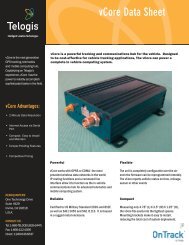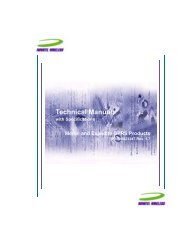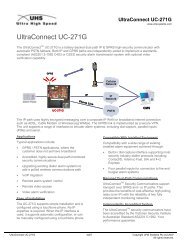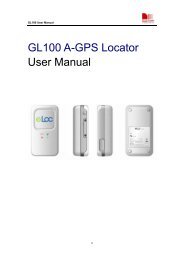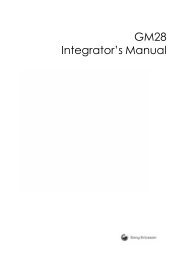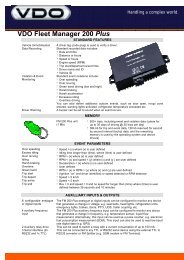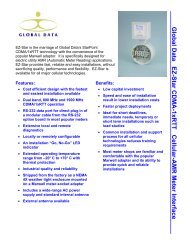Hardware Interface Description - KORE Telematics
Hardware Interface Description - KORE Telematics
Hardware Interface Description - KORE Telematics
You also want an ePaper? Increase the reach of your titles
YUMPU automatically turns print PDFs into web optimized ePapers that Google loves.
XT55/56 <strong>Hardware</strong> <strong>Interface</strong> <strong>Description</strong><br />
Confidential / Released<br />
s<br />
Figure 58 shows a sample application that incorporates an XT55/56 module and an external<br />
µC which controls the entire application.<br />
This µC must provide two asynchronous serial interfaces for controlling the XT55/56. One<br />
serial interface (TXD0, RXD0, CTS0, RTS0) controls the GSM part. The other serial interface<br />
(TXD1, RXD1) controls the GPS part of the XT55/56 module. It is recommended to use an<br />
interrupt input of the external µC for RING0 detection.<br />
If the application uses IP-based data connections (internet access via GPRS or CSD), the<br />
external µC is responsible for handling the IP protocol.<br />
To update the GSM and GPS software the test points (TP) must be used.<br />
Disclaimer<br />
No warranty, either stated or implied, is provided on the sample schematic diagram shown in<br />
Figure 58 and the information detailed in this section. As functionality and compliance with<br />
national regulations depend to a great amount on the used electronic components and the<br />
individual application layout manufacturers are required to ensure adequate design and<br />
operating safeguards for their products using XT55/56 modules.<br />
XT55/56_hd_v02.06a Page 122 of 125 17.12.2004



